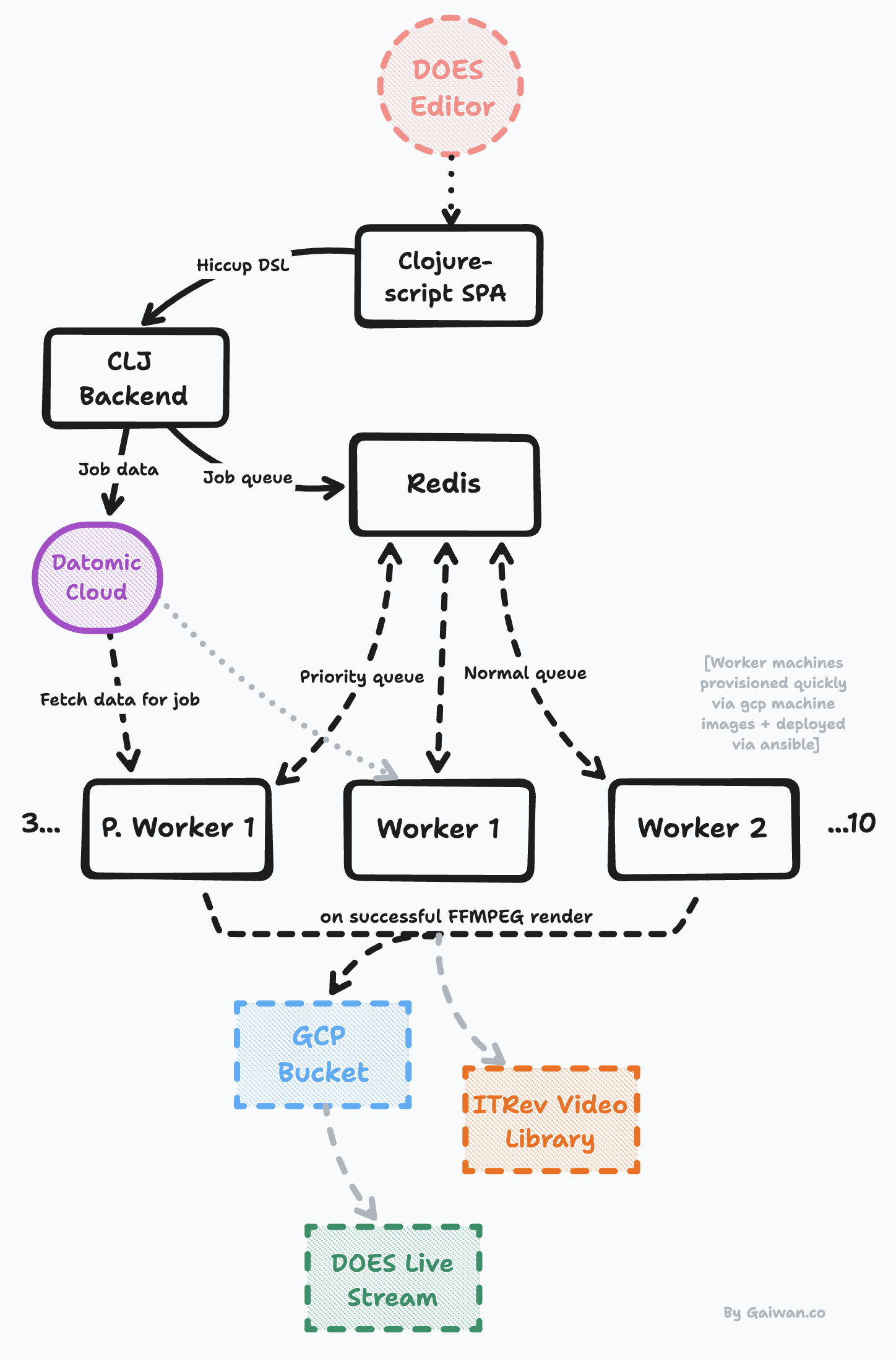Building a clojure based video editor and renderer on top of FFMPEG

As Covid hit, IT Revolution was faced with the task of shifting their entire conference (DevOps Enterprise Summit / DOES) operations online. This included editing over 100 videos per conference, each with custom operations that needed to be fulfilled. To meet this challenge, they turned to us to build a bespoke video editor that could handle their unique needs.
Our solution was a cloud-native video editor frontend that used FFMPEG DSL behind the scenes. This allowed IT Revolution's team to seamlessly edit and customize their videos using a pretty interface within the browser itself.
We worked closely with IT Revolution to understand their specific requirements and built a video editor that could handle all of their custom operations.
We chose to build a video editor completely in ClojureScript to solve the following problems:
- Edit multiple videos with customisable templates
- Certain conference videos all follow a similar style of editing eg: Have an opening title, background image, 2 picture-in-picture, switch from 1-PIP view to 2-PIP view etc.
- The editor allowed for video projects to configure these settings easily and getting out of the way. Then all the team had to do was make the right cuts for the content.
- Once the cuts were made the magic would happen all transparently
- Removing the cut mismatch between IT Revolution's conference team and the video editors
- Having to sit with the video editors, or provide them with a timestamp based text file detailing all the cuts needed in the final video was an extremely time-consuming and cumbersome process
- Small changes to the clip cuts needed an exponential effort to change
- We built an easy interface to add non-linear timelines to make the trimming and clipping process extremely intuitive
- Syncing speaker and slide footage
- Often the conference talks include an accompanying slide / video footage
- But these recordings are not always in sync
- We built a nifty UI interface for the conference team members to fix this mismatch and sync the footage
- They could then preview the synced footage together making the content clipping process even easier
- On-demand rendering
- The team sometimes had to make emergency changes to the videos at the end moment, sometimes even as close as 12 hours to the event
- We had beefy and horizontally scalable rendering machines always available to take up the load
- The team could just hit a button and the high quality renders would start
Hiccup-like FFMPEG DSL
- We leveraged the homoiconicity of Clojure[script] and used something called as “hiccup-styled” data structures.
- These are nothing but lists of lists and maps, you can think of it like a tree / simplified XML or HTML
- Each video meant to be edited had a hiccup-like edit-state, comparable to a saved Adobe Premiere file. Every time an editor made a frontend edit, we saved it in the internal representation of this data structure, which contains all the information related to how the video should be edited.
- Interaction with this DSL is done through
.cljcfiles, and the code is shared between the backend and frontend
Architechture

- DOES - DevOps Enterprise Summit
- Everything coloured is an external service
- Everything in black is deployed & managed by us
Technology stack
- Clojure for the backend
- Reitit
- Integrant
- Jetty + Ring
- Jesque
- Buddy
- Datomic cloud for database
- ClojureScript for the frontend dashboard, rendering jobs status, and the video editor
- Reagent
- Material UI
- video.js
- FFMPEG for video editing
- GCP compute instances for hosting the backend and for video rendering worker machines
- Redis for enqueing video rendering jobs
- Ansible for deployments

Comments ()